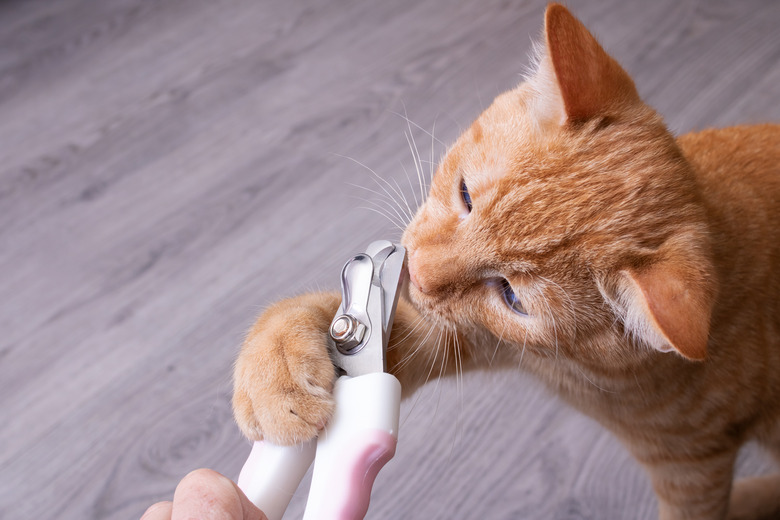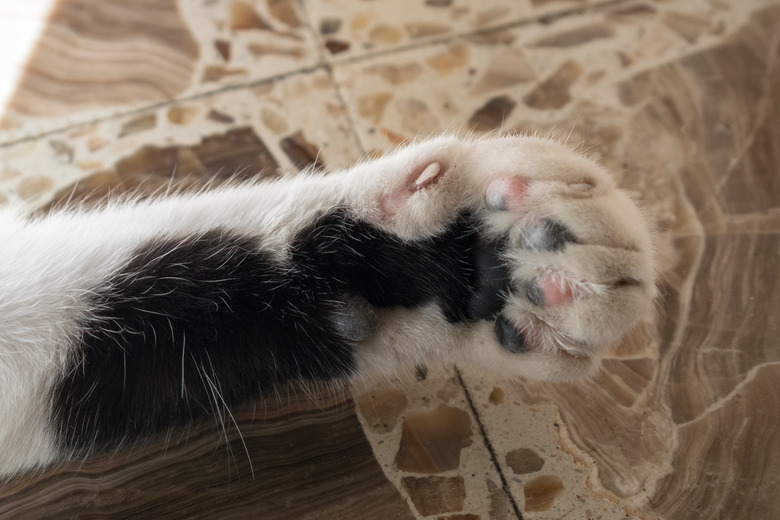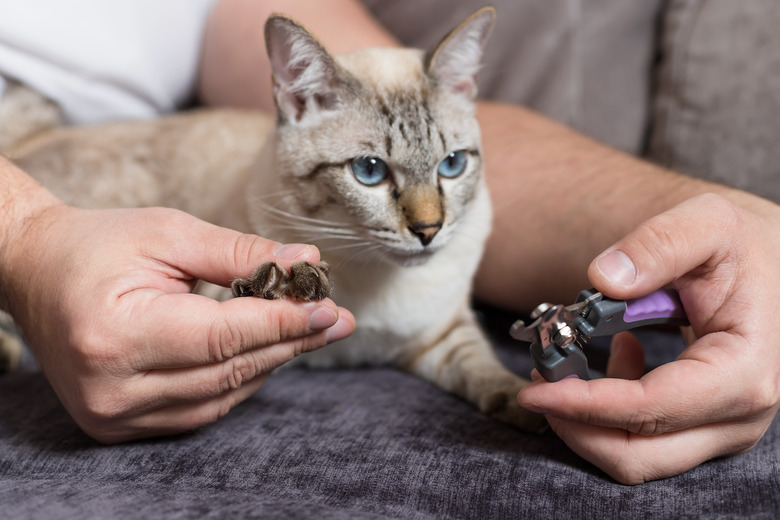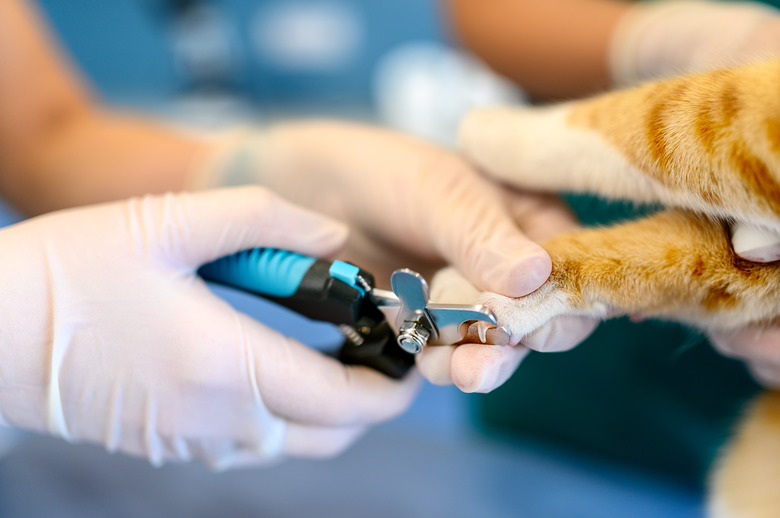How To Clip A Cat's Nails
Clipping your cat's nails benefits their health. It can also help your furniture and your wallet. It can seem like a daunting, if not utterly impossible task. But, there are some helpful tips and tricks to make it less intimidating.
Whether you're in between groomer visits or scratching posts for your indoor cat just aren't doing the trick we will guide you on how to properly clip a cat's nails. This includes a guide on preparation, proper tools, and handling. Maybe you even have a real sweetheart of a cat who lets you cut their nails already.
Is my cat going to let me clip their nails?
Is my cat going to let me clip their nails?
The first thing you have to do is make sure they're able to tolerate an at-home nail clipping — especially if you're starting with an adult cat. If yours is the type who doesn't allow you to do simple things (like pick them up or touch their paws), then it's very likely that it's not worth trying an at-home clip. Some pets even need sedation to get the job done. This is not personal and it's nothing to be ashamed of.
Be sure to make this a cooperative care experience. This means that you're not forcing anything on your pet. You shouldn't just power through when they show clear signs of distress or intolerance to their nails being cut. Rather, you want to create an experience that's mutually beneficial. This will lead to a happy and healthy relationship between you and your cat.
As long as you're able to touch your cat's paws and paw pads without incident, then you can move on to the next step.
Beginning the process of clipping your cat's nails at home
Beginning the process of clipping your cat's nails at home
Whether they're young or old, the way to start nail clipping will be the same. Begin the process by just playing with and touching their paws. Do this a few times a day for just a minute or two. This isn't a time to encourage them to bite or scratch at you while you do so. Instead, this is a good time to practice rewarding their good behavior.
Touch and very lightly squeeze their little toe beans so that their nail is revealed. This way, they can build a positive association with the feeling. You can also hold clippers nearby, closing and opening them to acquaint your cat with the sound. Do this for a few weeks before you try an actual clip.
Get the right cat nail clipping tools
Get the right cat nail clipping tools
The right nail clippers are not only going to do the job correctly, but they'll also put you at ease. They'll be simpler to use as a result. Avoid guillotine nail clippers if you're just starting out. A cat's claws can get stuck in guillotine nail clippers if a cat unexpectedly puts up a fight or flinches. Don't use human nail clippers on your cat's nails either as a beginner.
Dremels can be a great tool for dogs. But, most cats have difficulty tolerating their feel and sound of them, especially when starting out. The first two cat nail clippers on this list are excellent choices for beginners.
Having some stypic powder or cornstarch nearby is also a good idea in case a nail gets quicked. More on that later.
Clip your cat's nails in a quiet room with good lighting
Clip your cat's nails in a quiet room with good lighting
Make sure you can very clearly see every part of every paw. Be in a quiet room during a calm time, not when people are rushing around getting ready for school or work. Good lighting, a quiet room, and good energy are key.
Also, check your energy. The calmer you are, the calmer your cat will be. All of our pets sense our energy. If you're nervous, they'll feel the same. Take deep, calm breaths and put on some soothing music.
Wrap your cat in a blanket during their nail clipping
Wrap your cat in a blanket during their nail clipping
If they're more comfortable being bundled, you can burrito your cat in a towel by swaddling them all around (except for the one leg you're working with). Then, unwrap them and do it again for each of their paws. Only do this if it makes your cat comfier. Some find confinement soothing, while others despise it.
Whether you burrito them or not, make sure you or a buddy hold them against your body. Start with a back paw so that if biting occurs your hands will be further from their mouth. Again, if they show signs of distress aside from just being a little annoyed or scared, stop. Take them to a veterinarian or a groomer instead for their nail trimming.
Now you're ready to clip your cat's claws
Now you're ready to clip your cat's claws
Once their paw is safe and comfortable in your hand, very lightly take their toe bean in between your forefinger and thumb and gently press until the nail reveals itself. Once you do, you'll be able to see the full nail — including what's called a "quick." The quick is the close part where the nail connects to the toe. It's also where nerve endings are and if you cut the quick, it can bleed.
While that sounds intimidating, it's actually very easy to identify and avoid a cat's nail quick. Cat's nails are almost always clear. Where they start to become opaque and pink is the area to avoid. Only cut off the clear, sharp part of the nail. If you're in doubt, cut off less. You can always go back next week and do more.
Quicking a nail is an unfortunate reality of clipping. The most important thing is don't panic! Simply grab a small amount of styptic powder or cornstarch between your forefinger and thumb. Then, bring the powder to the tip where it's bleeding and apply it gently. It should stop the bleeding immediately. If the bleeding persists, contact your veterinarian.
Don't feel like you have to do all four paws at once. In fact, it might be better to space it out over the course of a few days.
You have now clipped your cat's nails!
You have now clipped your cat's nails!
It can be a daunting task that is filled with many relevant fears. But, patience, practice, and guidance are key. As are the proper tools and attitude. With all of these, clipping your cat's nails might not be so tough after all.



